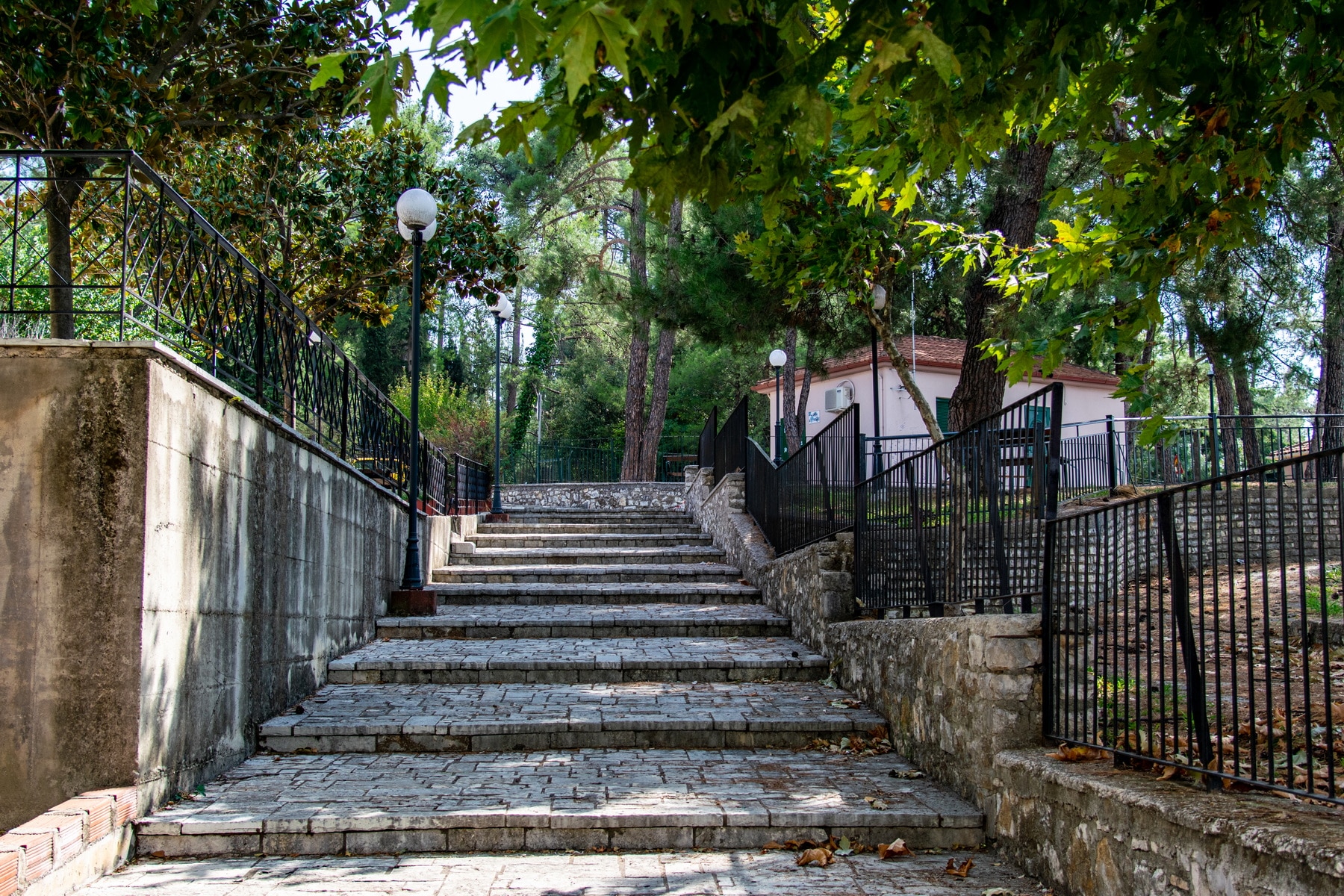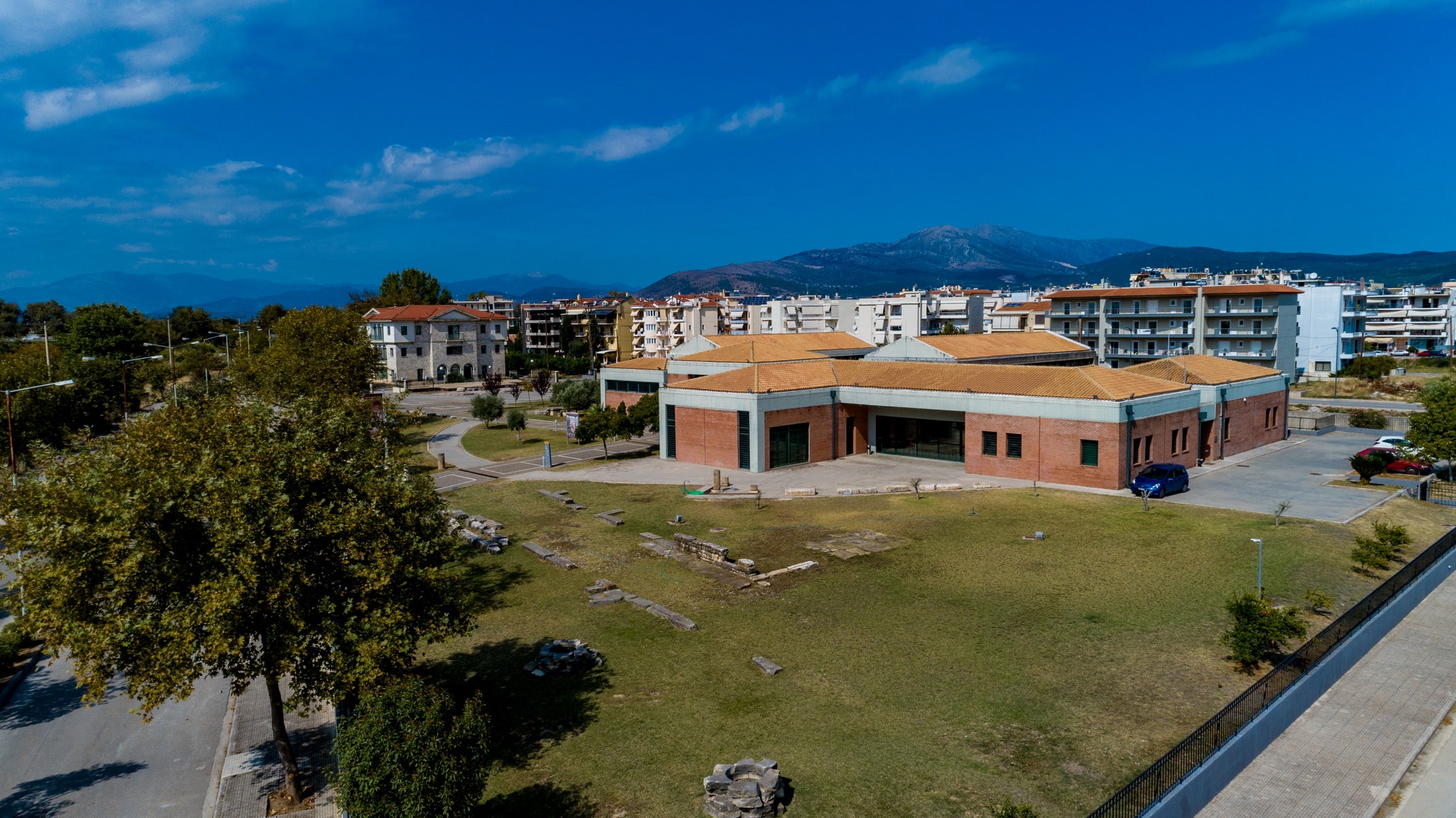The castle: The Byzantine castle of Arta occupies a hill on the northeastern side of the city and incorporates parts of the ancient fortification of Amvrakia. The strategic importance of the place was acknowledged by the ancient Amvrakiotes, who included it in the strong fortification of the lower city following the northern turn of the Arachthos River. The walls’ lower part with the colossal carved stones can be seen on the east and north sides of the Byzantine castle, which is supported on foundations and part of its superstructure.
According to the prevailing standpoint, the ancient fortification was, during the mid-Byzantine years, preserved at a sufficient height, which defined the city and protected the inhabitants. Although we know neither the extent of the Byzantine city nor the actual defensive effectiveness of the ancient walls, their presence seems to be a fundamental reason that the Byzantine castle is relatively small. It did not surround the whole city in contrast to other cities of the time, such as Ioannina, Mystras, Monemvasia, Rogoi, etc. . It was the administrative and military center and seat of the rulers of the Despotate, while the inhabitants resorted to it only in case of need.
According to newer data, the castle of Arta dates back to the mid-Byzantine period. Together with the ancient fortification, it contributed dynamically to the urban development of the Byzantine city, constituting a typical example of Byzantine fortification art and an impressive remnant of medieval Arta. Over the centuries, it has undergone renovations, additions, and repairs.
It consists of three parts:
1) the main fortress
2) two small external walls built at a lower level
3) the inner Acropolis fort, located to the left of the main gate
Its shape is an irregular polygon (maximum length 280m., width 175m.) that is interrupted every 25m. from semicircular, triangular, or polygonal towers, except for the eastern part, which is supported on the ancient wall. It is 2.50 meters thick. Its height reaches 10 meters and is crowned with ramparts having a wall walk for the defenders. Its masonry is simple, with irregularly carved small stones and brick insertion, covered later with mortar. More elaborate, isodomic, cloisonné Byzantine masonry system is found in the upper part of the castle’s west side, while on the east side of the inner fort, there is also brick decoration.
The Chronicle of the Tocco (14th-15th century) states that outside the castle gate was the market “”Borion”” or “”Emporion”” surrounded by houses and gardens. It must have extended along the main road leading to the castle. That is why this area attracted Jews early on (12th century), who settled there and gave the district the name Evraika, which means Jewish.
During the Ottoman period, the castle lost its importance and served as a prison for a long time. General Makrygiannis was imprisoned there.
Xenia: Arta’s old XENIA hotel, the most important and talked-about building in the Prefecture, lies in a central place inside the castle. A modern building in its time, it was built in 1958 by Dionysis Zivas, an architect and professor of the National Technical University of Athens, and funded by the Hellenic Tourism Organization.
The hotel offered just 20 sleeping rooms, while large event venues filled the rest of the place. It closed permanently in 1992.
After years of abandonment that made the building almost inaccessible, an architectural proposal was submitted in 2020 (Xenia 2020) to repurpose Arta’s XENIA. The proposal aims to fully utilize the building and the surrounding area to host various cultural, entertaining, educational, and recreational activities.
Finally, various cultural events are organized every summer in an area inside the castle.













